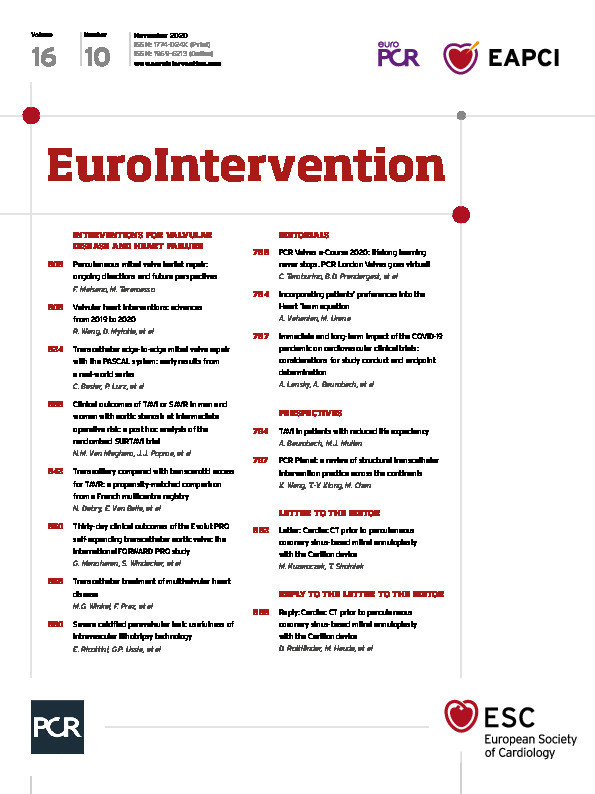
We read with great interest the article by Rottländer et al entitled “CT-Angiographic imaging of the Carillon device topography after unsuccessful treatment of FMR”1, suggesting that parameters such as coronary sinus (CS) to mitral valve annulus distance and angle might predict response to Carillon device implantation. However, the measurements were obtained nine months following the procedure when they might not reflect native preprocedural anatomical relationships. The Carillon device applies tension on the vein and frequently alters relations between adjacent structures. As an example, the vein can be displaced by the device which causes the artery to be no longer compressed, despite the preprocedural computed tomography (CT) showing otherwise. The AMADEUS trial also revealed no significant differences between responders and non-responders in terms of the position of the venous system in relation to the posterior mitral annulus2. Furthermore, counter-intuitively, the Carillon device was also effective when the coronary sinus and great cardiac vein were located above the plane of the mitral annulus. Given the above, a CT scan was no longer mandatory in later clinical trials which, in our belief, does not imply complete uselessness of the imaging technique.
Analysis of our own series of cases has shown that only the tenting area assessed by preprocedural echocardiography was correlated with the degree of improvement after Carillon implantation3. While we agree that cardiac CT has potential to yield important preprocedural data for planning and facilitating the procedure, assessment of the effect of reciprocal annular-CS relations by CT on the procedural results requires verification in a clinical trial. Rottländer et al should be congratulated for the excellent presentation of relevant measurements.
Conflict of interest statement
T. Siminiak was a proctor and an investigator in clinical trials sponsored by Cardiac Dimensions, Inc., and received personal fees from Cardiac Dimensions, Inc., during the conduct of the study. The other author has no conflicts of interest to declare.
Supplementary data
To read the full content of this article, please download the PDF.

